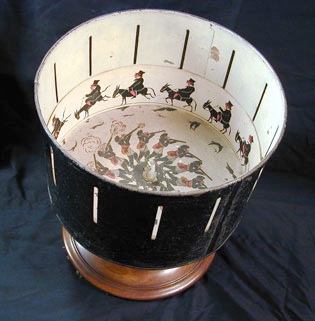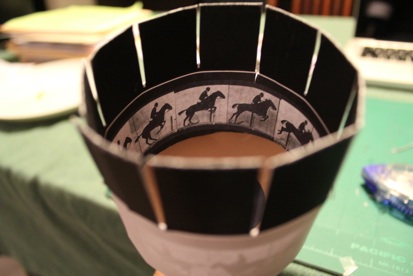Built A Zoetrope

“All motion is cyclic. It circulates to the limits of its possibilities and then returns to its starting point.”
-- Robert Collier
A zoetrope is “a device that produces an illusion of action from a rapid succession of static pictures.” While the earliest zoetropes were made in China in 180 AD, the modern zoetrope was invented in 1834 by William Horner, a British mathematician. He called it the “Daedalum”, which roughly translates “the wheel of the devil”. Ironically, the word zoetrope translates to “wheel of life”.

A zoetrope works for two reasons: the persistence of vision and the phi phenomenon. The persistence of vision refers to the tendency of an image to persist on the retina for 1/25th of a second, and the phi phenomenon refers to the tendency for the human brain to fill in the pieces between images and fill them in so they appear to be in motion.
These two principles are not only crucial to the function of a zoetrope, but also very important to animation and the work I do.
I found a template for a zoetrope online at this site: http://www.groeg.de/puzzles/zoetrope.html
I used his blank template and decided to insert Muybridge photos in the zoetrope.

I cut out the pieces using a pair of scissors and an Exacto knife.

I glued the pieces together and stuck a pencil in the middle.


This was a fun project. Zoetropes are cool. The 3D zoetrope of Toy Story characters is viewable from 360 degrees.
I recorded it rotating a little, but it was tough to get it to stay in one place on camera. Below is what mine looks like in motion.
Cool stuff:
Moving Image Technology– From Zoetrope to Digital by Leo Enticknap
blog comments powered by Disqus
